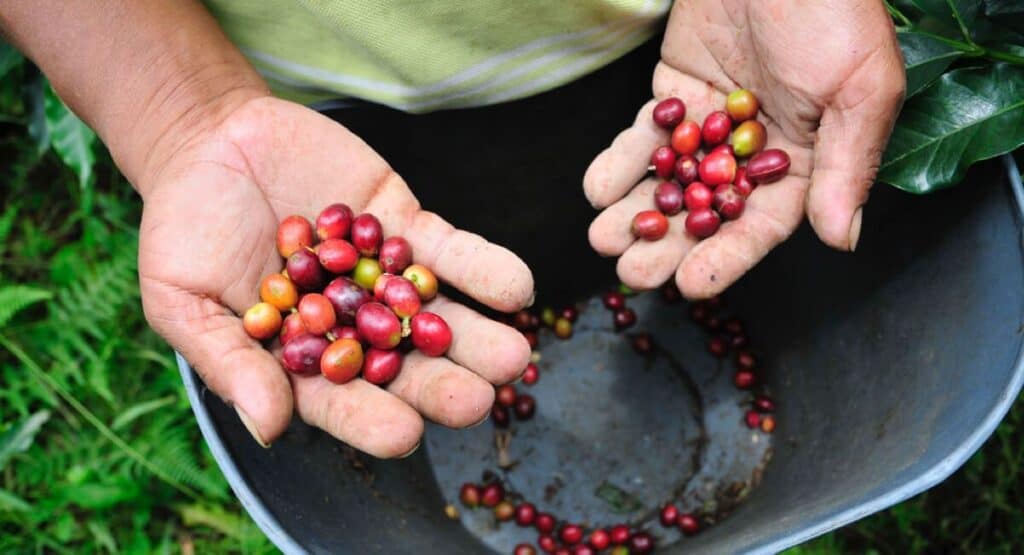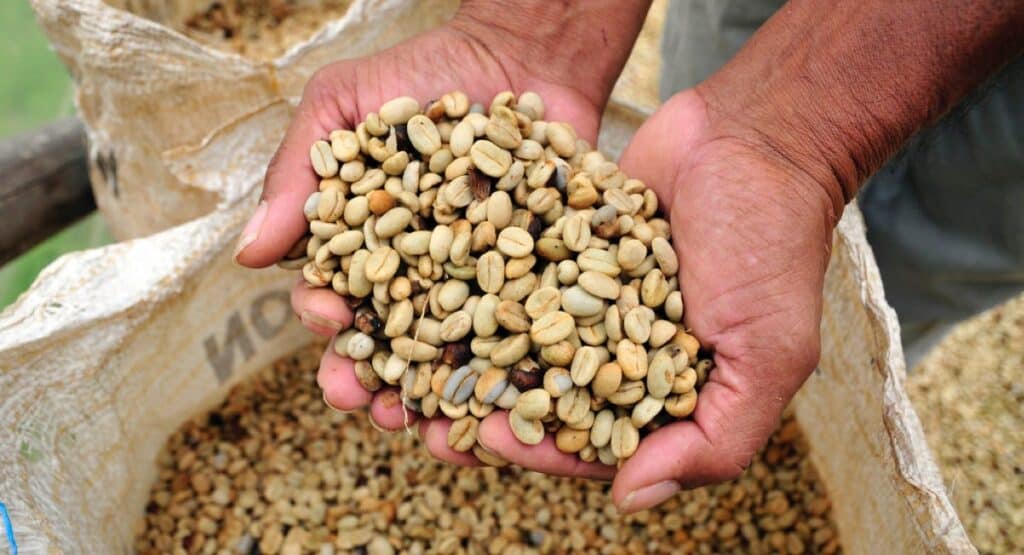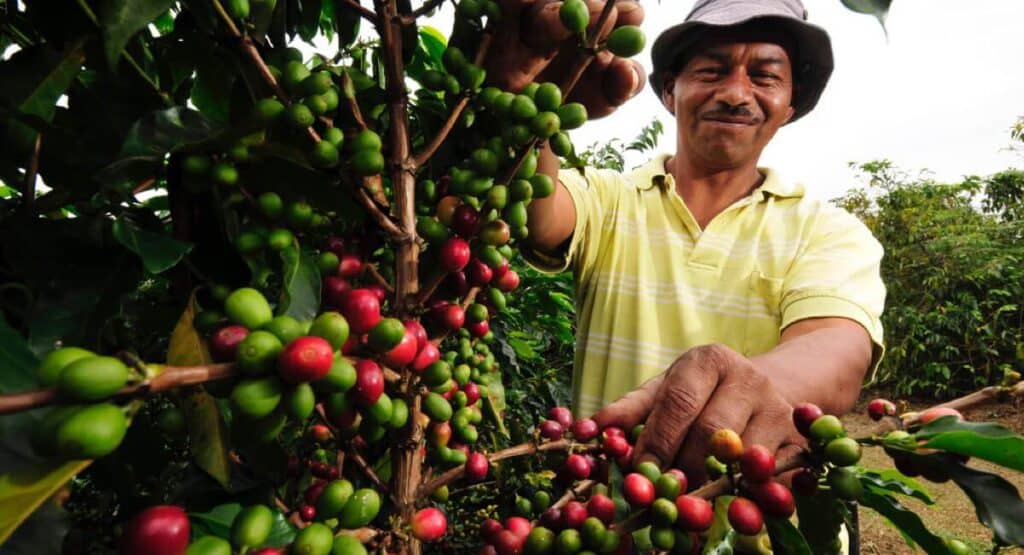
If you look around the page here or other coffee forums, you often see that people encourage others to drop the coffee from the supermarket and buy speciality coffee from micro-roasters.
But what exactly is the difference? Why is it so much more expensive? And is it really necessary? We try to answer that in this article.
The two coffees and the definition of specialty coffee
To look at the difference between speciality coffee and commercial coffee, ie the mass-produced coffee we buy in the supermarket, we need to have a few definitions in place.
There are two primary coffees worldwide: Arabica and Robusta. More than 60% of the world’s coffee is Arabica coffee, despite the fact that it is harder to grow than Robusta. This is because Robusta coffee is usually somewhat more bitter and “robust” in taste than Arabica, which has more acidity and a more delicate taste.
Robusta is cheaper and easier to grow, so it is often used in cheaper coffees and due to its strong taste it is used in instant coffee. Speciality coffee is almost always Arabica coffee.
Speciality coffee is often judged on a scale of 1-100, set up by the SCA (Specialty Coffee Association): a global organization trying to spread speciality coffee and a more sustainable coffee production. If coffee has a score of over 80 on the scale, then it can be categorized as a speciality coffee.
The journey of coffee from coffee berry to coffee cup
The price and quality of coffee beans also have something to do with how the coffee is grown. Coffee is grown in the tropical belt around the equator, what is called the ‘coffee belt’.
Coffee starts out as green berries on coffee trees. The berries turn red when ripe and turn black when overripe. The berries are usually picked by hand, but can also be harvested with machines in some places on larger plantations.

Once the berries have been picked, they are sorted and the pulp is removed from the berry, leaving only the green coffee bean. This is dried and then sold to roasteries, where it is roasted and eventually ends up with the consumer.
Many of the countries where coffee is grown are quite poor countries. These countries are often very dependent on coffee production and in some cases are also countries with political unrest.
Some small coffee farms also specialize to a greater extent in making high-quality coffee. The more specialized coffee farmers are very frugal in their finishing of the coffee beans. Make sure that only the red berries end up in the final sorting.
In some coffee farms, there is not the same focus on quality, as there are not the same requirements for the quality of the beans if they are to be sold on the stock market rather than micro-roasters and special roasters.
Coffee as a commodity and coffee as a specialty
Coffee beans are one of the most traded commodities in the stock market. It collects a lot of coffee from different coffee-producing countries that live up to simple standards and is traded in certain places.
This coffee is sold at a certain price that fluctuates like everything else in the stock market. For those who trade in the stocks, it is all about buying coffee cheaply and selling it high.
Let’s say I bought coffee on the stock market. There will be a price and I would receive a certain amount of coffee beans without much knowledge of where it came from or how it was produced. At the same time, the coffee farmer is subject to the market price and does not have very strict requirements for the quality that his / her coffee must-have.
For speciality coffee, on the other hand, the coffee is often traded through cooperatives or directly between coffee roastery and coffee farms. The coffee farmer gets a much higher price for his / her coffee than what he/she would get if it was sold on the stock market, and the coffee roaster in return gets a coffee that has been treated better, much more knowledge about the production and ultimately coffee in a much higher quality.
The great roasteries and the micro roasteries
Another big difference between commercial coffee and speciality coffee is how the coffee is roasted after it has been purchased.
The large, commercial coffee roasters buy huge quantities of coffee at home, which they roast in large quantities and in coffee roasters that can achieve a completely wildly high temperature. That way, you can produce a lot of coffee quickly.
On the other hand, it is not very good for the taste. The coffee is often roasted quite hard and not so frugally. The harder roasting is also often to mask the less good quality of the coffee beans. The more you roast coffee, the more of the beans’ natural flavours you roast away.
The coffee is also often sold ground, and since ground coffee loses most of its taste and aroma in an hour, you also roast the coffee quite hard, because otherwise, it will not taste of anything.
Micro roasters usually roast their coffee in small quantities so that it can stay fresh. Freshly roasted coffee is usually roasted within a week or two.

If you notice the coffee bags the next time you are in the supermarket, then you will see that many of them have a production date that is up to a year back.
Micro roasters usually also roast their coffee in smaller drum roasters, where the temperature is not as high as in commercial coffee roasters. There is therefore much more control over the roasting itself, and the coffee is gently roasted by people with a passion for the craft.
Transparency, taste and a proper price
So there are a number of differences between commercial coffee and speciality coffee. There is much higher transparency in the supply chain when buying speciality coffee. The more you know about where the coffee has come from, the more confident you can also be on the quality of the coffee.
You can also be more sure that the money ends up in the right place and that the coffee farmer sees himself properly paid. This is not always the case when coffee is traded on the stock market, and it is important when coffee often comes from countries with high poverty.
The micro-roasters also make sure that the coffee is fresh when you get it and that it has been roasted in a way that is similar to the quality of the beans.
Speciality coffee is thus somewhat more expensive than the coffee you find on supermarket shelves, but the quality and social responsibility associated with it is also higher.



Comments are closed.